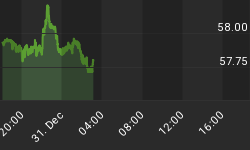Variant Perception has an interesting post out today on stock market buybacks: Pillars of Equity Rally Fall Away.
Stock buybacks have been an important feature of the equity rally. Companies have used low rates and easy credit to borrow money and used it to buy their own shares back. An identity for a company's share price is: S = (revenues * margins * P/E) / # of shares. Buying back shares reduces the denominator in this equation, thus (all other things equal) boosting the stock price. But buybacks are waning; the chart below shows a 27% decline in buybacks between 1Q14 and 2Q14. YoY it is down 1.6%. (Interestingly, the peak in buybacks was also the peak in the US stock market in 2007.)
Revenues are closely linked to nominal GDP, and our US leading indicator sees this as lacklustre at best going forward. Margins we have discussed in previous reports. Our leading indicator for wages has turned up, and this tends to lead to lower profit margins. Finally, multiple expansion has been a big driver of equity returns in 2012 and 2013, accounting for about 75% of returns. However, already in 2014 it is slipping, down from 67% in May to under 50% today (chart below). In short, the pillars of equity performance are crumbling, making it difficult to see how equities can remain supported between now and into early next year.
Conventional Wisdom vs. Reality
Conventional wisdom says earnings growth is the primary driver for stock performance. It's not. The price investors are willing to pay for stocks is the key driver.
In 2012 nearly 70% of share price increases were due to willingness of investors to accept higher PEs. In 2013, nearly 80% of the stock market rally is attributable to higher PEs.
Shiller 10-Year PE

Following the massive rally over the past several years, stocks are at one of the highest 10-year smoothed PEs in history exceeded only by the bubbles in 2000, 2007, and 1929. For a description of the methodology, please see 'P/E 10 Ratio'


















